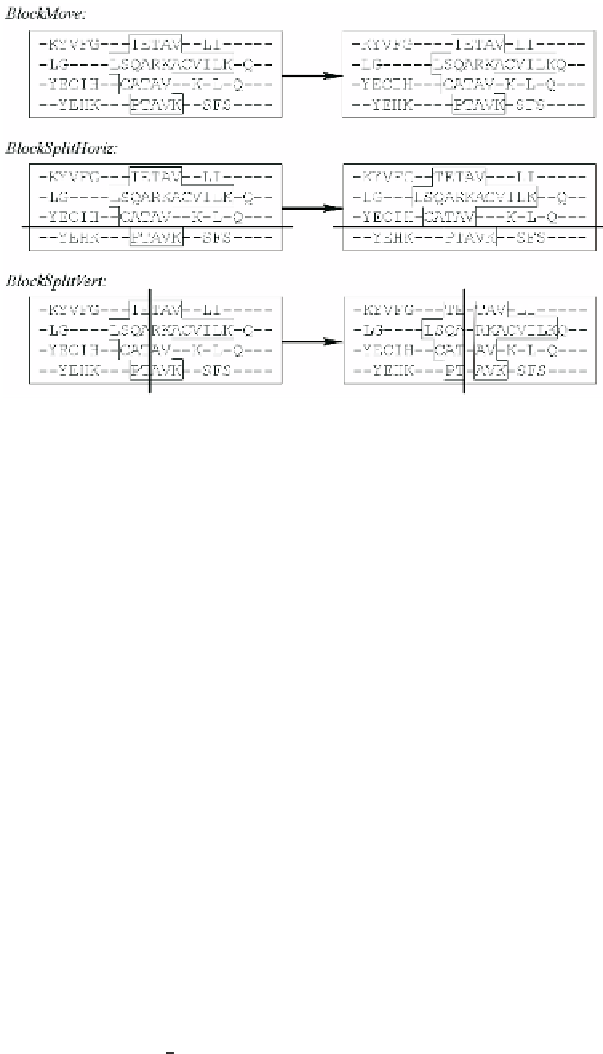Information Technology Reference
In-Depth Information
Fig. 2.
BlockShu
ing operator
has the purpose to shifting blocks of amino acids
or gaps. Upper plot shows the
BlockMove
operator; middle plot drawing how
Block-
SplitHor
works, choosing the 4
th
row to divide the block in two level; lower plot shows
BlockSplitVer
operator performing a right shift.
Evaluate(P )
computes the sum-of-pairs objective function of each B cell in
the population
P
, i.e. the proposed alignment quality, using the equation 1.
The aging operator, used by the algorithm eliminates old B cells in the pop-
ulations
P
(
t
)
d
,P
(
gap
)
N
c
and
P
(
block
)
N
c
, whilst maintaining high diversity in order to
avoid premature convergence. The maximum number of generations a B cell can
remain in the population is determined by the parameter
τ
B
:. When a B cell
reaches
τ
B
+ 1 it is erased from the current population, even if it is a good can-
didate solution. The only exception is made for the best B cell present in the
current population: (
Elitist-Aging
).
A new generation
P
(
t
+1)
d
of
d
B cells is obtained by selecting the ”survivors”
after the aging operator was applied to the populations — the resulting pop-
ulations are:
a
P
(
t
)
d
,
a
P
(
gap
)
N
c
and
a
P
(
block
)
N
c
.
The (
μ
+
λ
)-selection operator (with
μ
=
d
and
λ
=2
N
c
) reduces an offspring B cell population of size
λ
μ
toanew
parent population of size
μ.
Such a selection operator guarantees monotonicity
in the evolution dynamics.
Finally,
T
max
is the maximum number of fitness function evaluations and the
termination criterion.
Table 1 shows the pseudo-code of the described hybrid immune algorithm.
The functions Compute Weights() and Normalize Weights() compute and
normalize the weights of the sequences using a rooted tree, which is used for the
evaluation of the objective function.
≥



